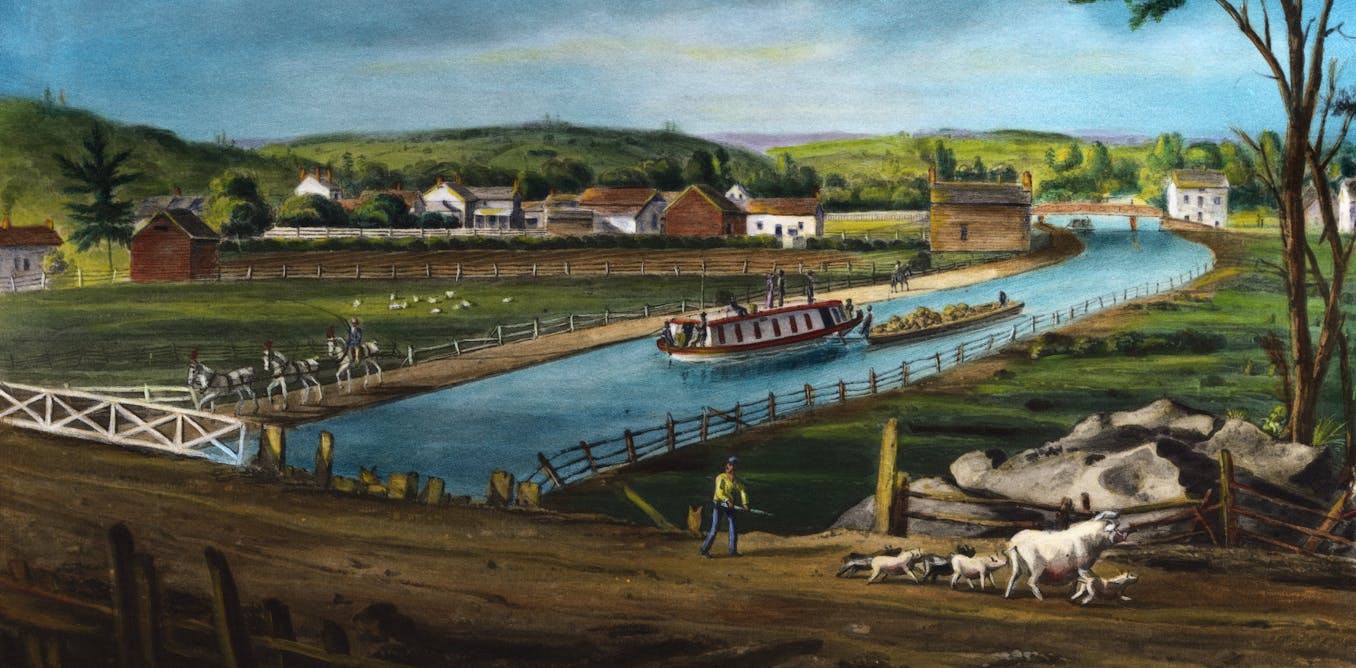
"Mules on the towpath along the canal could pull a heavy barge at a clip of 4 miles per hour - far faster than the job of dragging wagons over primitive roads. Boats rushed goods and people between the Great Lakes heartland and the port of New York City in days rather than weeks. Freight costs fell by 90%."
"The Haudenosaunee Confederacy, the Indigenous nations that the French called the Iroquois, engaged in canoe-based trade throughout the Great Lakes and Hudson River valley for centuries. In the 1700s, that began to change as American colonists took the land through brutal warfare, inequitable treaties and exploitative policies. That Haudenosaunee dispossession made the Erie Canal possible."
The Erie Canal opened on Oct. 26, 1825, cutting a 360-mile route through forests and fields and accelerating transport and commerce. Canal boats and mules moved goods from the Great Lakes to New York City in days rather than weeks, reducing freight costs by about 90 percent and strengthening New York's commercial dominance. Construction reshaped regional ecology, altering the Hudson River and lower Great Lakes. The project followed the dispossession of the Haudenosaunee through warfare, inequitable treaties and exploitative policies. State funding under DeWitt Clinton advanced the megaproject after federal refusal to finance internal improvements.
Read at The Conversation
Unable to calculate read time
Collection
[
|
...
]